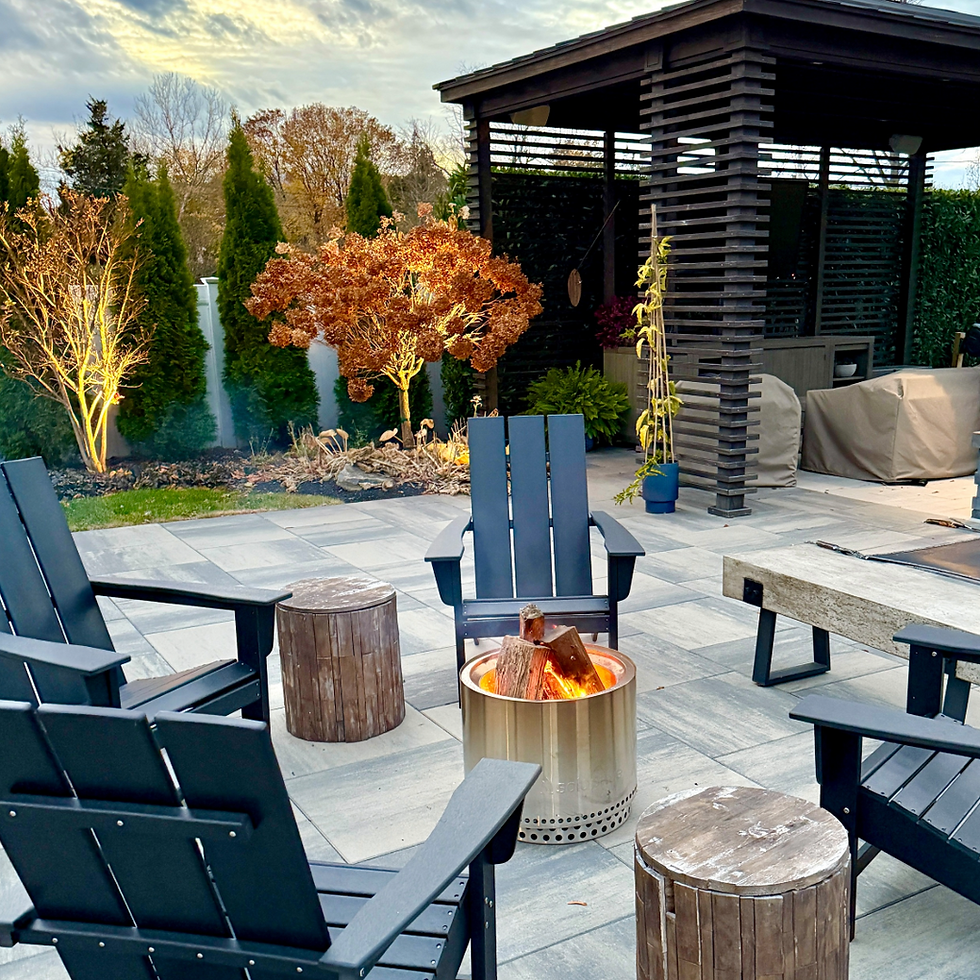How to Prepare for Fall Planting
- Rebekah
- Aug 15, 2024
- 3 min read
Updated: Sep 18
It's time to think about fall planting! Many of you have already stopped by to gather ideas and ask for help with your landscaping; that is so smart! As we are less busy now, it is an ideal time to stop by if you have several gardening questions specific to your landscape.
Fall is an excellent time to plant and is regarded by many experienced gardeners as the best time to plant. The reason for this is because most plants appreciate being planted when the weather is cooling down and when they are about to go dormant for winter. It gives them several months to start to become acclimated in your soil before hot summer weather comes our way again.

1. Pay special attention to your sunlight.
Full sunlight = 6+ hours of direct sunlight per day OR full afternoon sunlight (which is the hottest sun of the day).
Part sun = morning sun/ afternoon shade.
Shade = full day shade or dappled shade (such as under a canopy of trees).
2. What are the dimensions of the new gardening bed (or existing that you're adding plants to)? When planning for plants, be sure to account for the plant's mature size. Your garden may look a little sparse the first year or two, but before you know it, those plants will have grown and will reach maturity (you can bypass this tip to an extent if the plant you're planting is a super slow grower- then you would want more plants around it as it would take many, many years to mature).

3. What kind of garden do you like? Formal, easy to maintain, cottage... gather ideas through Pinterest, TikTok, or Instagram of what kind of garden you envision- also, keep in mind, that gardens take time and patience to grow into what you'll see online.
4. This tip correlates to number 3- pay attention to the style of your home, especially if working on front landscape. Do you have a traditional brick exterior? A white farmhouse? Keep your home's front elevation and style in mind when planning the front landscape design. Using varying plant height, textures, and a mix of evergreen/ deciduous plants matters when planning your landscape and you can work with your home's exterior there, too. For example, focal points are often between two identical windows (such as garage windows); a Crape Myrtle could be planted there, or a tall, slender evergreen (such as 'Sky Pencil' Holly or 'Emerald Green' Arborvitae). Plants often look best in groupings or in odd numbers.

5. Think about what plants you can incorporate for a four-season garden. Gardens that have color and interest all year are such a joy! A four-season garden can be accomplished through a mixture of deciduous and evergreen plants, as well as perennials (for example) that bloom at different times of the year. There are even winter-blooming flowers!
6. Amend any gardening beds or vegetable beds in preparation for fall vegetables. We offer organic soils, topsoil, and other amendments needed to prepare for cool-weather crops or brand new gardening beds. Ask us specific questions about your project at the nursery and we will be happy to help assist you.
Because plants are preparing to go dormant in fall, you should not fertilize any plants after August. You do not need to prune in fall either, as you would be cutting back a plant at a time when it will immediately try to grow back, but it shouldn't be exerting that energy as it is supposed to be preparing to go dormant. Fertilize in late winter/ early spring, and also do the majority of your pruning at that time (with the exception being spring-blooming shrubs and trees; they need to be pruned right after they bloom in spring, as well as certain hydrangeas that grow on old wood). Stop by or give us a call for specific questions you may have as you prepare for fall planting!



